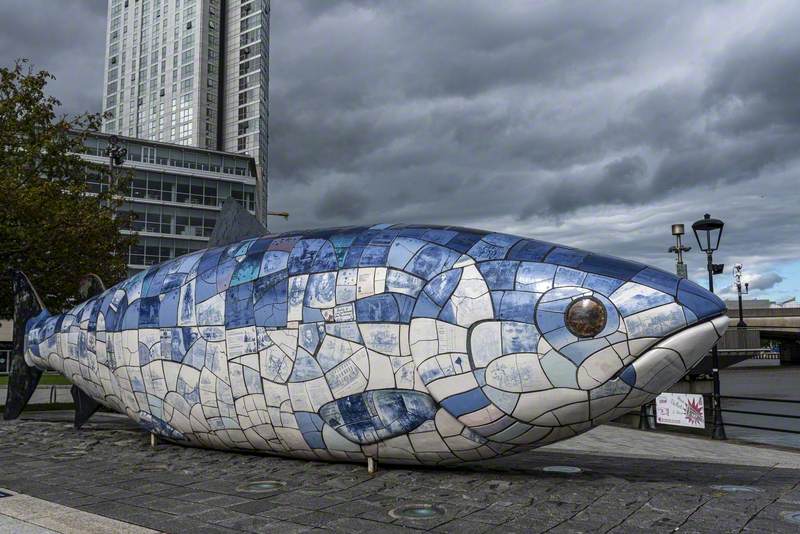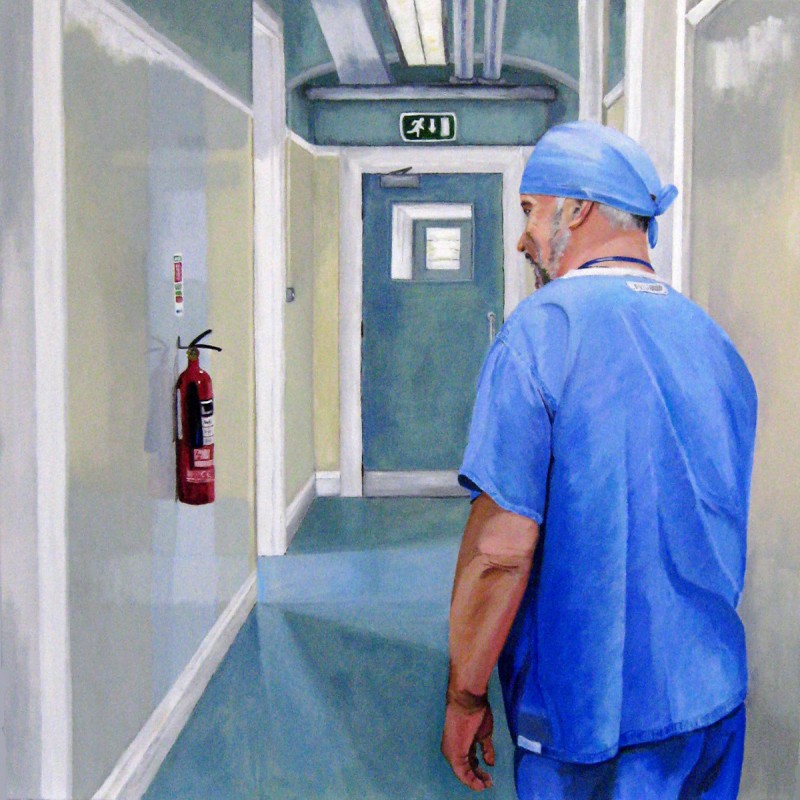Belfast-born artist Colin Davidson is showing a powerful exhibition of portraiture, 'Silent Testimony', at the National Portrait Gallery in London until February 2025.
Celebrated for his large-scale portrait paintings, Colin's subjects have included royalty, presidents and celebrities – but for this series, his sitters are people who suffered loss through the Troubles in Northern Ireland. The display sheds light on the enduring impact of conflict through the personal stories of those affected.
In June 2012, I was asked by Mark Carruthers, the then Chairman of the Lyric Theatre in Belfast, if I would consider presenting five of my large-scale portrait paintings of artistic luminaries to a visiting delegation. I agreed, and six days later found myself waiting in the large, light-filled foyer at the Lyric with two previous sitters of mine – Michael Longley and Barry Douglas – both standing with their portraits. In the moments before the party arrived, I remember us commenting on the gravity of the meeting taking place in a room just feet away.
A single television camera was allowed and, as we tracked this camera coming towards us, the enormity of what I was witnessing hit me. The delegation approaching included HM The Queen, the Duke of Edinburgh, the President of Ireland Michael D. Higgins and his wife Sabina Coyne, the First Minister Peter Robinson and the Deputy First Minister Martin McGuinness.
'Margaret Yeaman', 2014, oil on canvas by Colin Davidson (b.1968)
Margaret Yeaman was injured on 15th March 1982. She was working in an estate agents in Banbridge when a no-warning car bomb exploded close by. Much of the town was destroyed. Margaret sustained serious facial injuries, requiring over 100 stitches, and was permanently blinded. She was the mother of four young children at the time. Margaret is now a grandmother, but grieves that she will never be able to see her grandchildren. 
I was born in 1968 and grew up in south-west Belfast. To witness the Commander-in-Chief of the British Armed Forces discuss my paintings with a once high-ranking member of the Provisional IRA was nothing short of staggering. Of course, I knew they were not visiting the Lyric primarily to see my paintings but I realised a bridge had been crossed. An understanding and realisation of the conflict being consigned to history was cemented. To me, this unthinkable meeting had become a reality.
Ever since the Belfast Agreement of Good Friday 1998, there had been a growing swell of voices calling for a communal moving-on. History was just that – history – and time healed. Most of us ticked the 'yes' box in the referendum that followed the Agreement. In that simple stroke of the pen, we hoped were putting the dark, murky, terrifying decades of what was known as the Troubles behind us. We wished for life to be normal.
'Thomas O'Brien', 2014, oil on canvas by Colin Davidson (b.1968)
Thomas O'Brien was bereaved on 17th May 1974. His brother, John (23), sister-in-law, Anna (22), and two nieces, Jacqueline (17 months) and Anne Marie (5 months), were killed when a no-warning car bomb exploded as the young family were walking along Parnell Street in Dublin. A total of 33 people lost their lives that day, in separate bombings in Dublin and Monaghan. 
But time doesn't always heal. For many thousands of people living in Northern Ireland, and indeed beyond, that tick on the ballot paper also marked an end of hope: hope for justice or answers. Their personal moving-on was now impossible. For many, the natural human process of dealing with loss was interrupted, often never to restart.
'Fiona Kelly', 2014, oil on canvas by Colin Davidson (b.1968)
Fiona Kelly's father, Gerry Dalrymple (58), was killed on 25th March 1993, when gunmen opened fire on the van in which he and his colleagues were travelling in Castlerock. The workmen had been carrying out building and renovation work for some months in the seaside town. Three other men died in the attack. Gerry Dalrymple lived in Rasharkin and was the father of six children. 
When I started my series of large-scale head paintings, I was preoccupied less with the sitter's celebrity or achievement, and more with their status as a human being. It was a kind of 'common humanity' which linked all the paintings and was part of the reason I chose to eliminate any visual reference or clue to each subject. In scale, intensity and intention the sitters were treated as equals. Of course, the aesthetic and more formal issues of craft, modelling and likeness were important, but a tension was created where the motive of leaving room for the spirit clashed with the actual painting. The sitter's identity had become secondary to their realisation as a human being.
'Johnnie Proctor', 2014, oil on canvas by Colin Davidson (b.1968)
Johnnie Proctor's father, John (25), was killed on 14th September 1981. Johnnie was born the day before, and his father was visiting the Mid Ulster Hospital in Magherafelt to see his wife and newborn son when he was shot dead in the hospital car park. Johnnie was named after his father. 
It is on this foundation that this body of 18 paintings rests: paintings of human beings linked by their unique experiences of loss. Whilst identity or 'label' is buried in the paint, it is my hope that the stories are not. For, on an island where storytelling has been a bedrock for centuries, these stories – and the many other thousands – form the legacy of all conflict.
'Silent Testimony' at the National Portrait Gallery, London
It is a true privilege to see 'Silent Testimony' installed at the National Portrait Gallery, on one of its most important outings. This exhibition is not only my personal response to the lived legacy of the Troubles but also a comment on the fallout of all conflict.
Silent Testimony is not just about Northern Ireland but about conflict more generally and the people who are left behind in the wake of war. In making this exhibition I wanted to explore the legacy of our past and how it still impacts people today, not by seeking out answers but rather by posing questions.
It is my hope that, in bringing this collection to the National Portrait Gallery, people will be offered a chance to engage with the human stories behind the conflict, reflecting on its impact and the resilience of those who have endured it.
Colin Davidson, artist
'Silent Testimony' can be seen at the National Portrait Gallery in London until 23rd February 2025
This story was adapted from text written in 2015, on the first showing of 'Silent Testimony' at the Ulster Museum, Belfast








